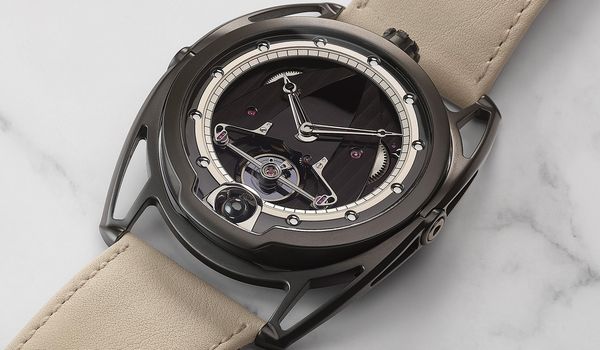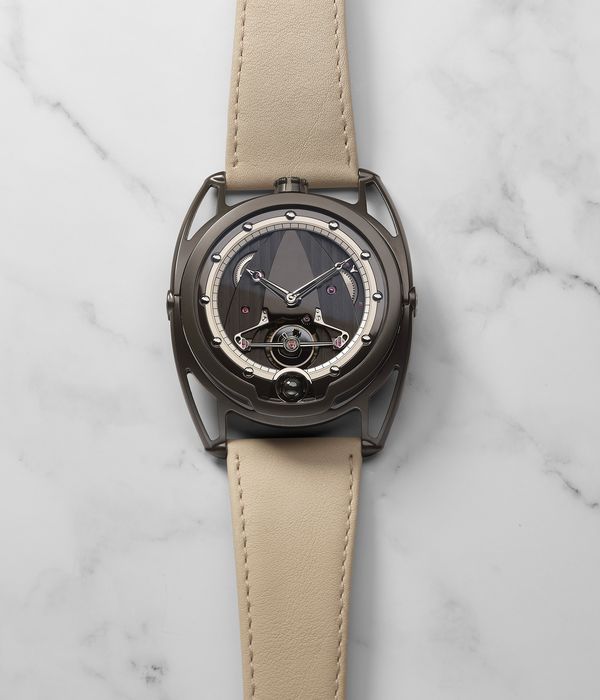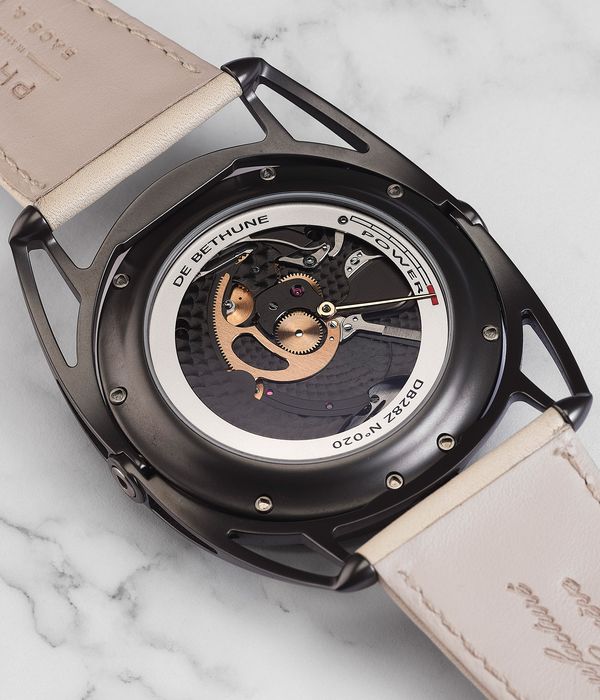For many collectors and watch enthusiasts, De Bethune is considered one of the best kept secrets in the watch industry, or the greatest brand you’ve never heard of. The independent Swiss watch manufacturer is still young having only been founded in 2002 by David Zanetta, a well-known watch expert and collector, and Denis Flageollet, who we could say was predestined for the vocation as he is a fourth generation master watchmaker. The brand seeks to blend contemporary, cutting-edge technology with the spirit and beauty of 18th century watchmaking with lavish finishing, and has done so admirably. This has of course attracted quite a few discerning collectors to own a timepiece from the young maison, and contributed to the success and uniqueness of the brand, which can be directly attributed to Flagoellet’s technical know-how and philosophical approach to the craft.
Born in France, Flageollet majored in science during his secondary school studies, before crossing the border to Switzerland to study watchmaking and micro-engineering. After completing his training, he joined the Musée d’Horlogerie du Locle as a technician in antique watchmaking, where he would encounter historic complications from the masters of yesteryear, augmenting the innate sense for horology he obtained genetically, and start imagining how it could all be improved. Flageollet then worked in Michel Parmigiani’s workshop before co-founding Techniques Horlogères Appliquées (THA) with François-Paul Journe and Vianney Halter. The 12 years spent at THA saw him set up the production workshops, handle technical management, and head the R&D department, while also working on projects for other brands.
Flageollet and Zanetta, who was a colleague at THA, felt though that the Swiss watch industry had spent too much time on standardising production and should be, instead, innovating technically and aesthetically. Flagoellet was already as fascinated by age-old watchmaking techniques as he was by the immense possibilities offered by technological advancement; for him, solving a horological question means putting himself in the shoes of master watchmakers from the past, figuring out how they would have thought about the problem and how they would have solved it. Sometimes the answer resides in the fact that the watchmakers simply didn’t have the technology available today, which enables Flageollet to leverage modern CAD and CNC technologies to combine classic watchmaking traditions with modern processes. This was born the main concepts behind De Bethune, which set out to advance watchmaking on all facets, to evolve beyond the established fundamentals.
What sets Flageollet’s timepieces apart are the use of high-tech materials and futuristic space design, his pioneering work in the use of silicon balance springs and shock protection, and the constant pursuit of perfection for each of the timepieces leaving the manufacture, most notably in terms of movement and case finishing. The total symbiosis between the internal and external elements of a De Bethune timepiece offers collectors the opportunity to own a watch that is easy to read, while also giving immense pleasure to look at and get lost into.
The most emblematic watch produced by De Bethune remains the DB28, which won the Aiguille d’Or award at the 2011 Grand Prix d’horlogerie de Genève (GPHG), and features many of the maison’s signature innovations such as the balance wheel facing the front of the watch with the balance in silicon and a ring of platinum, the in-house hairspring with patented terminal curve, and the triple parachute anti-shock system. The watch also showcases a 3D moonphase indicator crafted from a tiny ball of palladium and flame-blued steel, and the case features the trademark “floating” lugs that collectors have now come to expect from De Bethune timepieces, and which make them some of the most comfortable watches to wear.
Flageollet’s philosophy to watchmaking is just as much on display in complicated pieces as it is in the entry level the DB27 Titan Hawk created to celebrate De Bethune’s 10th anniversary, and its focus on the aesthetic concepts, with a high degree of finishing on materials that are not traditionally presented in that fashion, such as titanium. The no-compromise approach to refinement is clearly showcased with the delicate mirror-polishing of the grade 5 titanium case, the flame-blued hands, and the calendar function taking centre stage on the dial. But of course, what strikes collectors the most is the silicon and white gold balance wheel revealed through the caseback as De Bethune has perfected the use of silicon over the years to reduce the effects of gravity and friction to increase chronometry.
Re-interpreting and re-engineering complications has long been at the core of Flageollet’s work and the DB29 Maxichrono Tourbillon undoubtedly represents the embodiment of that philosophy. Although it is equipped with a tourbillon, this aspect isn’t given priority over its chronograph complication, for good reason, as all the chronograph functions point to one single focal point on the dial, to give maximum exposure to the patented construct employing three different clutch mechanisms behind three semi-independent systems controlled by three column wheels, reducing friction as much as possible on the relevant parts. In keeping the design of the piece pure and uncluttered, a crown-based monopusher for the chronograph is the perfect sign of elegance and tradition.
With several international prizes and multiple patents under his belt, Flageollet has also dedicated some time to passing on his experience and knowledge to watch enthusiasts and the up-and-coming generation of watchmakers, hoping that the spirit of innovation that sparked De Bethune will continue.


